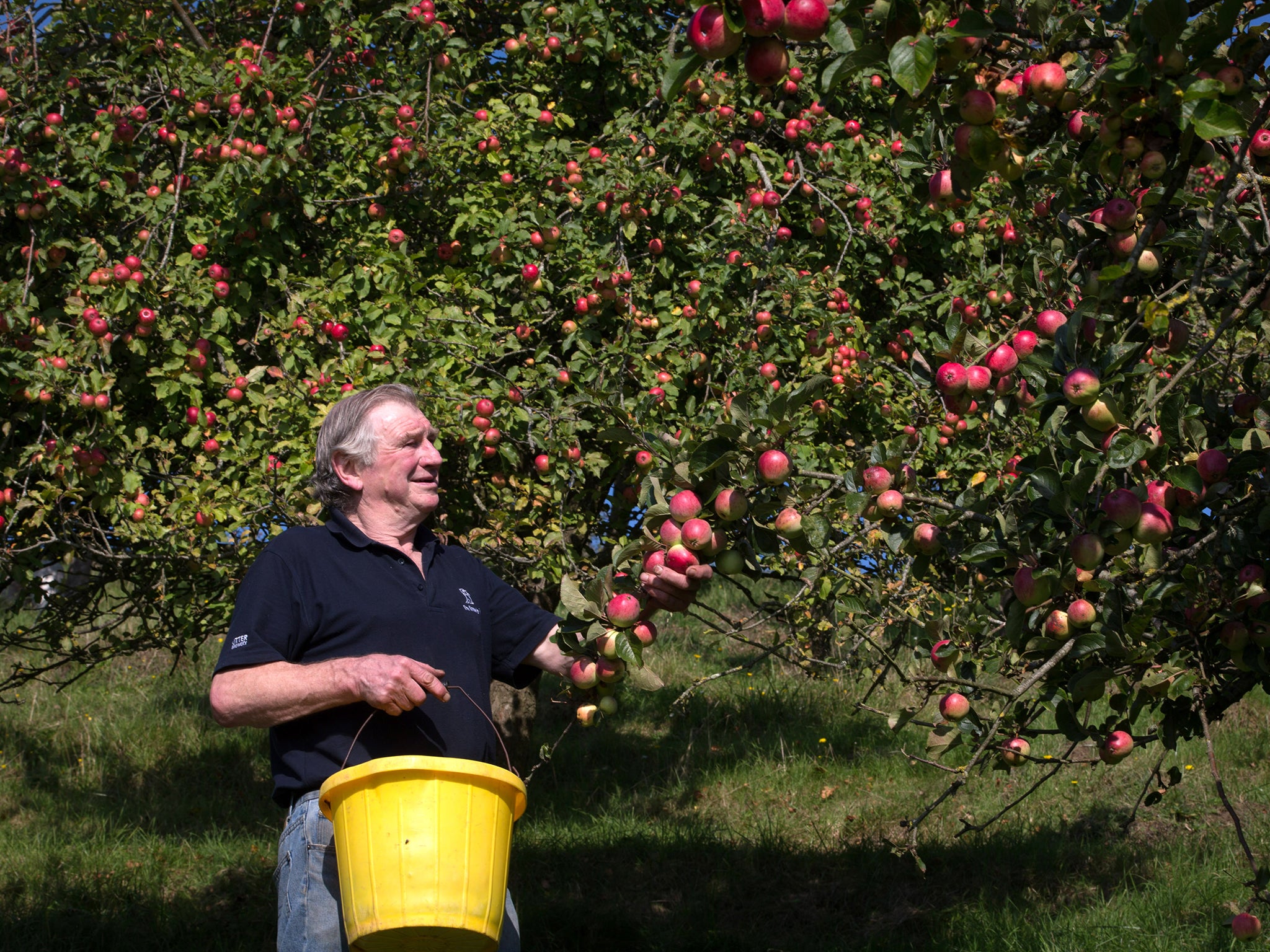Nature Studies: An apple a day is the cure for UK's ailing traditional orchards
Thanks to a new database, you can find the Blenheim Orange, the Beauty of Bath, even the Ribston Pippin

Your support helps us to tell the story
From reproductive rights to climate change to Big Tech, The Independent is on the ground when the story is developing. Whether it's investigating the financials of Elon Musk's pro-Trump PAC or producing our latest documentary, 'The A Word', which shines a light on the American women fighting for reproductive rights, we know how important it is to parse out the facts from the messaging.
At such a critical moment in US history, we need reporters on the ground. Your donation allows us to keep sending journalists to speak to both sides of the story.
The Independent is trusted by Americans across the entire political spectrum. And unlike many other quality news outlets, we choose not to lock Americans out of our reporting and analysis with paywalls. We believe quality journalism should be available to everyone, paid for by those who can afford it.
Your support makes all the difference.Last Wednesday, 21 October, was “Apple Day”, and if you roam around the web you find that scores, maybe even hundreds, of celebrations of our national fruit were held all over the country to mark it. This is not bad going for a traditional festival that may seem centuries old, but is actually only aged 25 – it was instituted in 1990.
It is a calendar custom invented from scratch by two environment campaigners, Sue Clifford and Angela King, who together founded Common Ground, a charity devoted to a quality which is dear to many people but had never been articulated before: local distinctiveness. They care about preserving dialects, old maps, regional foods, parish customs – and the wonderful range of English apples, of which there are thought to be more than 2,000 different varieties, with splendid names such as Beauty of Bath, Blenheim Orange, Worcester Pearmain and Ribston Pippin.
By 1980 the big supermarkets had reduced all these choices to a basic three – McIntosh Red from Canada, Granny Smith from Australia and Golden Delicious from France – with a few seasonal additions of Cox’s Orange Pippins, and Bramley cooking apples. By dreaming up Apple Day, Sue and Angela helped spark an English apple renaissance; many more of the old varieties with their distinctive flavours are now available.
But as traditional apples disappeared from supermarkets, an even worse fate befell the traditional orchards in which they had been grown: they had been grubbed up all over the country as part of the post-war rush to intensive farming.
Traditional orchards are not only magical places; they are also wildlife havens, containing large amounts of dead wood in old trees, on which more than 400 invertebrate species directly depend, such as the noble chafer beetle, which is not only rare but a spectacular metallic green.
More than 1,800 species can be found in traditional orchards, from little owls to orchids, moths to lichens. But since 1950 it is estimated that 90 per cent of them have been destroyed. (Modern orchards, which have young, small trees and are drenched in pesticides and artificial fertilisers, are much poorer in wildlife.)
Four years ago a small wildlife charity, the People’s Trust for Endangered Species (PTES), produced the first inventory of the traditional orchards still extant in England: they found there were just over 35,000 remaining (a survey of Wales in 2013 found another 5,000). On the charity’s website you can find the details of these surveys, which are fascinating – but even more so are the wonderful maps where you can locate the old orchards in your area, every one of them.
In 2007, the Government made traditional orchards a priority habitat for wildlife and efforts are increasing to preserve them and improve their condition; many are in a poor state. To mark Apple Day 2015, PTES announced a new range of measures aimed at stemming their decline, including orchard management advice, grant funding, and a new database of traditional fruit varieties, coming online next year, so you can track down where to find a pound of Blenheim Oranges, which good judges consider the most magnificent apple to have in for Christmas. That’ll be available in the spring. But for now, you can look at the maps and just dream.
Join our commenting forum
Join thought-provoking conversations, follow other Independent readers and see their replies
Comments